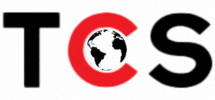ISO 14001 Environmental
The environment in which an organization conducts its activities, including air, water, soil, natural resources, flora, fauna and humans, and the relationship between these is called the “environment”. It is an undeniable fact that this environment, in which humans live and coexist, is gradually disappearing as a result of developing technology and industry. Environmental pollution, due to the increasing world population, the dizzying pace of development and progress of technology, the shrinkage of living spaces, the destruction of the natural environment, noise, faulty practices, lack of information and many other reasons, has become one of the most important problems threatening human life and quality of life in recent years.
Environmental problems and pollution, which have become one of the problems threatening humanity since the second half of the 20th century, have become more noticeable as a result of industrialization. Environmental problems, which were previously perceived only as pollution and had local characteristics without gaining an international dimension, have increased rapidly day by day, have become a problem of the whole world, have lost their locality and have become problems of the whole world. At this point, environmental standards, national and international legal regulations for the environment have been put into practice in order to reduce the damage that humanity has given to the environment. In this context, the standard series published by the International Standards Organization (ISO) for the protection of the environment is called the ISO 14000 series.
The ISO 14000 series standards are, in essence, a set of standards that aim to reduce the use of natural resources and minimize damage to soil, water and air. It bases this on the monitoring and continuous improvement of environmental performance and requires compliance with the conditions defined by the relevant legislation and laws regarding environmental factors.
The standard that is certified within the ISO 14000 series is the ISO 14001 Standard. ISO 14001 is a standard that provides guidance for determining environmental factors from the raw material to the product being presented to the customer and minimizing the damage to the environment by controlling these factors with the necessary precautions. ISO 14001 is a management system developed to systematically reduce and, where possible, eliminate the damage that businesses cause or may cause to the environment.
Since the ISO 14001 Environmental Management System Standard and the related series of standards are in a structure that is compatible with the environmental laws and regulations for implementation in force in all countries, the applications are generally parallel to the fulfillment of the obligations brought by the legislative requirements and form the basis for the implementation of the applications within a system. The ISO 14000 series of standards includes many standards. The most important and well-known of these standards are:
- ISO 14001 Environmental Management Systems – Requirements and User Guide
- ISO 14004 Environmental Management Systems – General Guide to Principles, Systems and Supporting Techniques
- ISO 14020 Environmental Labels and Declarations – General Principles
- ISO 14031 Environmental Management – Environmental Performance Assessment – Guide
- ISO 14040 Environmental Management – Life Cycle Assessment – Principles and Framework
What are the Benefits of ISO 14001 Environmental Management System?
- Ensures compliance with national and international legal requirements.
- Facilitates the removal of consent and authorization documents.
- Gives national and international recognition.
- Decreases the costs arising from environmental effects.
- As a result of the effective use of natural resources reduces costs, increases productivity.
- The customer guarantees that you entered under an obligation to the granting of environmental management, customer confidence increases.
- Reduces liability, which resulted in the events, and consequently provides the potential to reduce liability insurance costs.
- Starting from the source is controlled by the company from operations and the pollution pollution is reduced.
- Thanks to the determination of the presence of potential danger, emergency prepared and taken resulting in a loss against accidents is reduced.
- Therefore the quality of the workplace workers ' commitment to the enterprise spirits are up and increases.
- To increase environmental awareness in employees with training given to personnel is provided.
- Enter markets where production processes are important for green to make it easier.
The ISO 14001 Environmental Management System Standard has begun to be perceived almost as a product and service passport for organizations that want to have a respected place in the international and national market. The standard can be applied by all organizations and manufacturers that provide products and services, especially industrial organizations and public institutions.
